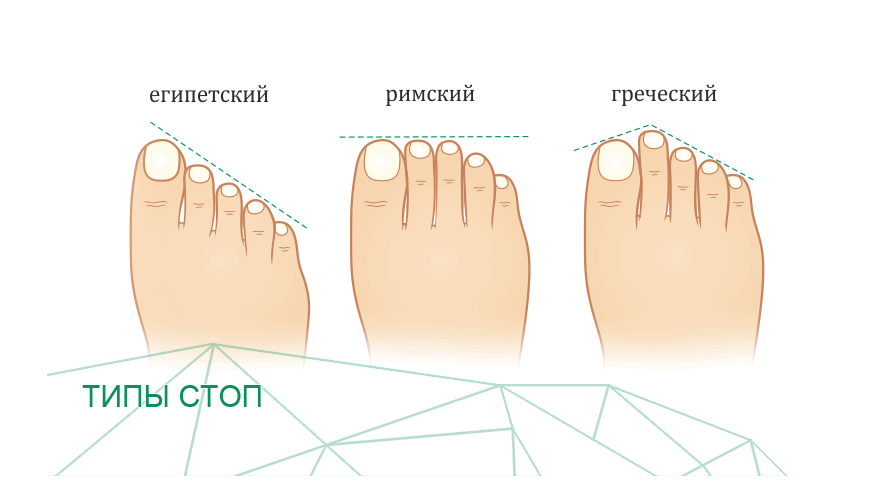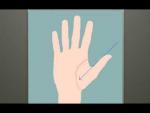Why is the second toe longer than the big toe?
When people have a second toe longer than their big toe, they experience a lot of discomfort when walking. Some owners of this foot shape wonder what this means and whether this condition can be corrected.
When a person's index toe is longer than the first (big) toe, the toe condition is called Morton's toe. This means that 1st metatarsal bone of the foot is shorter than 2nd.
Most people have this descending toe arrangement, however, about 10% of people have such a foot that the index finger is larger than the rest. This condition was first described by the American orthopedist, surgeon D.D. Morton.
Medical literature deciphers this condition as a pathology that occurs quite often among society. People experience virtually no discomfort from the fact that the second toe protrudes significantly, except for the occurrence of calluses on it, discomfort when wearing closed shoes, and occasionally pain. This is due to the characteristics of weight distribution. Also, discomfort when wearing closed shoes can lead to curvature of the nail plate.
This condition should not be confused with neuroma T.D. Morton (orthopedist, namesake of D.D. Morton). With neuroma of the feet, the middle and ring fingers suffer from pain. But most of all the pain is localized between them.
Historical facts
According to popular scientific historical explanations, the big toe was previously smaller than the index toe of Neanderthals. Europeans in the Middle Ages believed that if the index finger was larger than the first, this indicated the aristocratic character of its owner.

In ancient Greece, sculptures were made based on the fact that the second finger is larger than the first. Gradually, after numerous sculptures of people with similar feet, the concept of a Greek foot appeared. Then, after the Greeks, the ancient Romans also began making sculptures of people on whose feet the big toe is smaller than the index and even the middle toe. And all because previously people with such feet were considered close to God. Even the well-known Statue of Liberty has index fingers that are slightly larger than her thumbs. Astrologers at that time believed that such people were blessed with a domineering character from the planet Jupiter.
Italian artists like Botticelli, Michelangelo, Leonardo da Vinci and others also preferred to depict some people with similar feet. Moreover, sometimes the index fingers depicted were much longer than the thumb.
The Egyptian foot is completely different from the Greek foot. The opposite is that she does not have a Morton's finger and all fingers are arranged in descending order.
Multiple empirical data indicate that people with such feet had a special domineering character. Moreover, both men and women possessed these qualities. So in India, mothers were not allowed to marry their sons with owners of such feet, in order to avoid being controlled by a woman. In other countries, it was believed that if both partners had Morton's toe, it would be very difficult for the couple to get along.
Genetic and medical indicators
According to many genetic data, Morton's finger is hereditary. Moreover, inheritance should be for several generations. Doctors believe that this foot shape is a recessive symptom, the penetrance of which is incomplete.

Other doctors believe that the age of closure of the growth zones of tubular bones provokes the development of Morton's toe and deforms the foot. This especially happens during puberty. In men it occurs much later than in women, which is why they are often taller and have longer legs. This is due to the fact that female tubular bones undergo closure much earlier.
And, despite the fact that some people believe that this foot speaks of a powerful character and fortitude, the inconvenience may still bother people more. Thus, orthopedists note that Morton’s finger symbolizes the presence of flat feet. Even an ordinary person can check this. It is enough to paint your foot with gouache and leave an imprint on a piece of paper. After this, you need to find the center point on the heel and also mark the center of the ball of the middle toe. Then you need to draw a straight line connecting these points. If it crosses the arched contours of the foot, then there is no flatfoot. But most often, for those with Morton's finger, the line does not intersect anything. Therefore, if such a feature is present, treatment for flat feet is often prescribed.
Wearing open-toed shoes (especially heels) usually causes calluses to form on Morton's toe or the nail to become bent. Therefore, such people need to wear shoes that are at least half a size larger than necessary. This avoids unnecessary pressure on the foot and nail deformation.
Women who prefer to wear narrow high-heeled shoes may be considered at risk. As a result, the foot is compressed and the bones are displaced. Overweight people are more susceptible to this condition. As a result, a pain syndrome develops that is comparable only to the pain of metatarsalgia.








 Nail care
Nail care Prom hairstyle for long hair
Prom hairstyle for long hair 18 wonderful New Year cards that even a child can make
18 wonderful New Year cards that even a child can make The best set of exercises for morning exercises
The best set of exercises for morning exercises